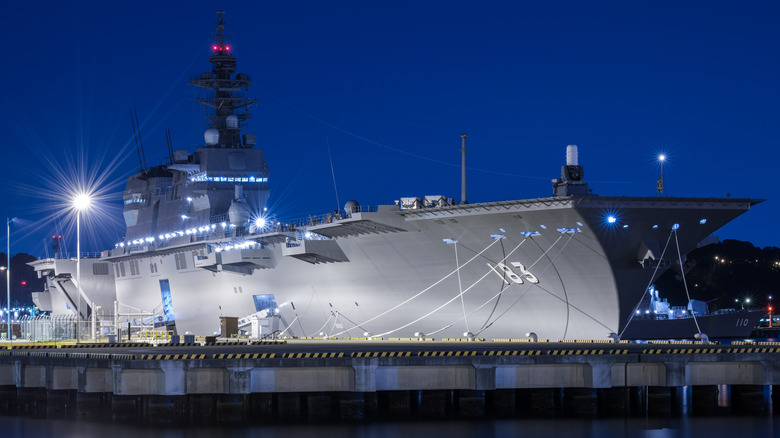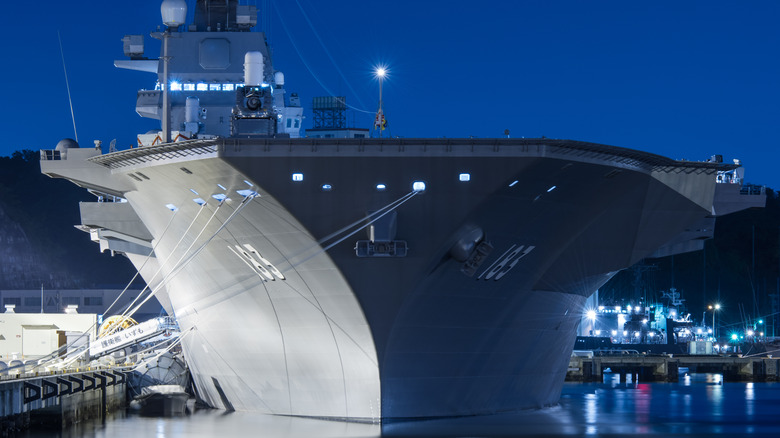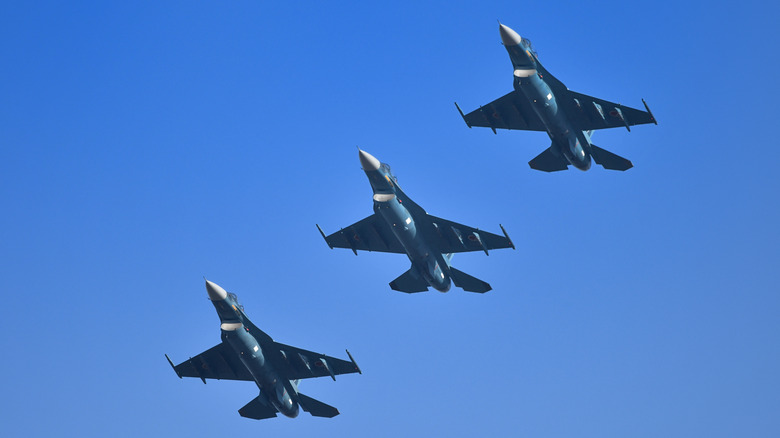The Izumo-Class Destroyer: What You Should Know About Japan's First Post-War Aircraft Carrier
Japan was at one time a pretty formidable imperial power with a massive array of military, air, and naval units dominating the waters and skies around the island nation. It was this robust mobilization of military might that allowed the small country to control and — briefly occupy — parts of East Asia, while threatening global superpowers like the United States. However, after World War II, Japan was forced to dismantle and disband its military arm, later signing a security treaty in 1955 with the U.S. From then on out, the U.S. would keep bases there to defend the nation. It was understood that the national interests of Japan would shift away from armaments, and the country's military, navy, and air force have been limited for decades.
However, Japan has been undergoing some pretty major changes to its national defense strategy recently, and the country has a new large ship at the ready amid increasing global tensions. Technically, this ship is classified as an Izumo-class "helicopter destroyer" due to restrictions on Japan preventing it from hosting offensive weapons, but it essentially has many of the same capabilities of an aircraft carrier.
Japan's Izumo-class destroyer is a force to be reckoned with
The Izumo-class carriers represent what might be considered controversial to some: a return to Japan housing massive warships of its own in local harbors. After this ship was first commissioned in 2015, it underwent several modifications allowing it to carry and dispatch F-35 Lightning II fighter jets — effectively making it a venerable aircraft carrier.
The Izumo-class ship has a total length of 813 feet and a beam width of 124 feet. It has a displacement of 19,500 tons when empty and 27,000 tons when fully loaded, which does makes you wonder how it could ever stay afloat. The Izumo is big, but still much smaller than the biggest aircraft carriers in the world. It can house up to 28 total aircraft, with a mix of helicopters or attack jets. The ship can also carry a total of 970 crew, while able to hit top speeds of 30 knots. It has advanced weaponry on board, including two Phalanx Close-In Weapon Systems, SeaRAM missile systems, floating acoustic jammers, an anti-torpedo mobile decoy, and Mark 36 SRBOC and NOLQ-3D-1 EW electronics suites.
The Izumo-class ship was created as geopolitical tensions rise
While written into the constitution that Japan is to limit its offensive military endeavors, the Izumo-class helicopter destroyer could potentiate attack capabilities while bolstering territorial defense in the East China Sea. Japan satisfactorily ran F-35B fighter jet tests last year, while logging successful landings by its test pilots near Maryland in a joint exercise with the U.S. This shows a strong collaboration between the two former enemies, in an evolution to shore up defenses in Asia, where China has been pestering Japan. In May 2025, a Chinese coast guard helicopter entered Japanese airspace near the disputed Senkaku/Diaoyu Islands, stressing diplomatic relations.
With an ever-changing geopolitical landscape, new conflicts seem to pop up frequently as old ones continue to rage on. In the case that Japan's tactical potential and defense capability could be tested, too, it has U.S., British, and Australian allies to help with naval defense. Still, China's regional dominance combined with its surface warships could pose a major threat. Let's hope that Japan never has to deploy its Izumo-class ship as we continue to chart testy geopolitical waters.


